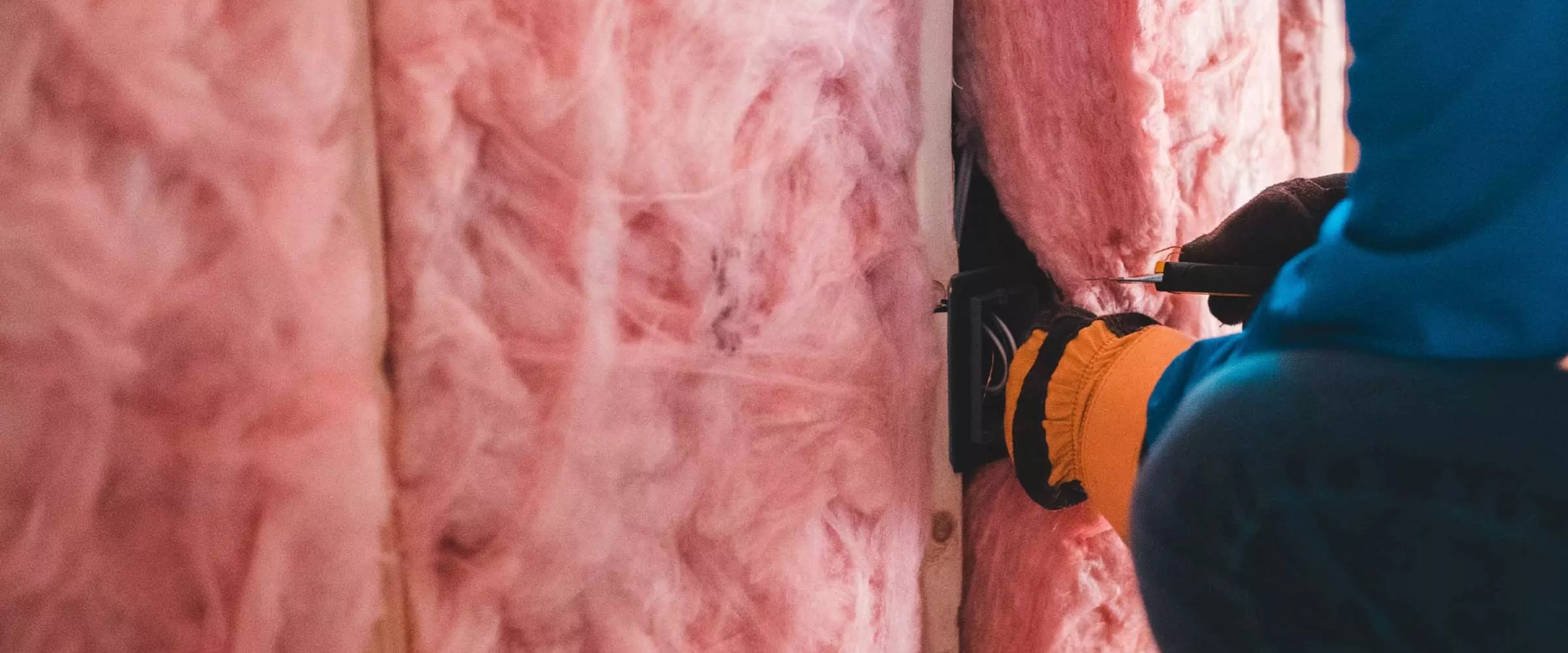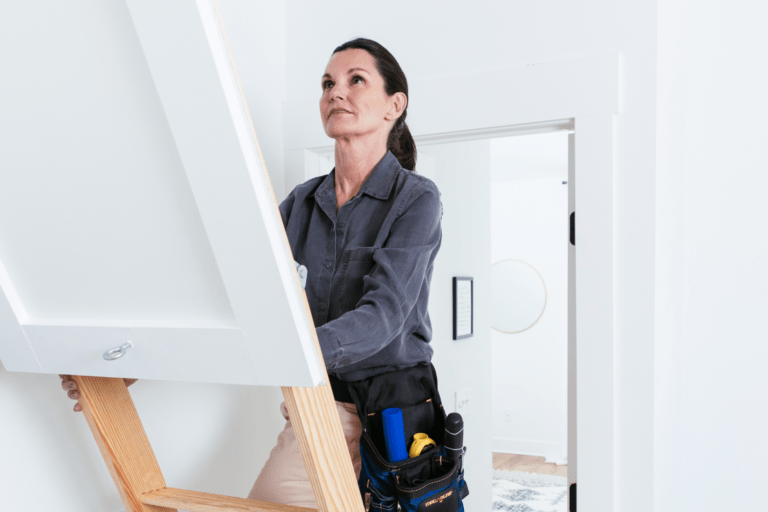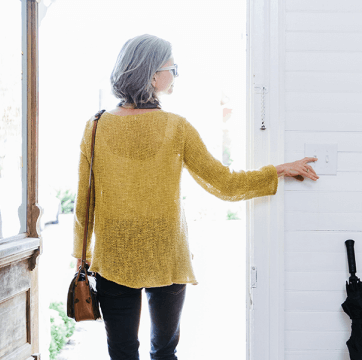
Keep your home cozy with home insulation rebates and air sealing rebates.
Insulation and air sealing keep conditioned air where it belongs: inside your home. Now, for a LIMITED TIME, you may be eligible for a $500 attic insulation rebate from TVA EnergyRight® and your local power company.

Here’s how our air sealing and home insulation rebates work:
To help make sure the job’s done right, all TVA EnergyRight rebate-eligible upgrades must be completed by a member of the Quality Contractor Network. Use our “Find a Contractor” search tool to take the guesswork out of finding a vetted, licensed and insured contractor for air sealing and attic and wall insulation rebate projects.
Lower your energy bill by up to 10% with home insulation and air sealing.
The right insulation, correctly installed, helps slow down the movement of heat through your home. Simply put, in the winter it keeps the warm air inside and the cold air outside.
During the summer months, insulation keeps your cool air inside, and the heat — and humidity — outside. You can trust our expert contractors to recommend the right insulation and air sealing solutions for your home. Use the ENERGY STAR Rebate Finder to look for rebates and special offers in your area.
Available air sealing and home insulation rebates.
| Project | Rebate |
|---|---|
Attic insulation | $500 |
Wall insulation | $300 |
Envelope air sealing (includes entire home) | $300 |
Tune-up for existing heat pump or central air conditioning system | $50 |
Access air sealing and home insulation rebates through the Quality Contractor Network.
TVA-vetted contractors from our Quality Contractor Network* complete all rebate-eligible upgrades, and they’ll even submit your rebate request for you!
*All TVA EnergyRight rebate-eligible upgrades must be completed by a member of the Quality Contractor Network.
Get the FAQs about rebates, DIY Home Energy Assessments, the Quality Contractor Network and more!
Have questions about our rebates? Want to see a list of all of our home energy rebate offerings? Need to learn more about financing? Get the answers to all this and more by visiting our Frequently Asked Questions page.
Rebates
Quality Contractor Network
Financing

Looking for more ways to save?
Discover how your home uses — and loses — energy by taking our new and improved DIY Home Energy Assessment. Get your customized report, rebate and credit recommendations, home improvement gift card, and a free energy-saving kit when you complete the free assessment.
Questions about ducts? We have the answers!
Insulation FAQs
What does insulation do?
Insulation protects the conditioned areas in your home from the unconditioned areas. Translation: It prevents outdoor temps from disturbing the temperature you’re enjoying inside as well as keeping the unpleasant temps of, say, a hot and humid attic or a chill and damp basement, from crossing the thermal boundary into your living space.
What is an R-value?
Insulation levels are rated by R-values which measure insulation’s ability to resist heat flow. The higher the R-value, the better the thermal performance of the insulation.
Consult a TVA-vetted contractor through our Quality Contractor Network to find out the right AC unit for your home and budget.
Why is attic insulation important?
Attic insulation helps your home conserve energy by slowing down heat loss and heat gain, and reduces the size of heating and cooling equipment needed.
How much attic insulation should I add?
The recommended insulation level for most attics is around R-38, or about 10 to 14 inches, depending on insulation type.
Why is wall insulation important?
Wall insulation, like attic or floor insulation, is used to keep your indoor climate in and the outdoor climate out. If you’ve been in an old house, then you know how drafty they can feel, or even the opposite, how stale the air can feel. One of the reasons for that is poor or nonexistent wall insulation. But you don’t have to live in an older home to feel the effects of ineffective wall insulation. Maybe you want to turn an unfinished space, like a basement or garage, into a bonus room or small apartment. In that case, you’ll definitely want to add additional wall insulation to make it comfortable and energy efficient.
How much exterior wall insulation should I add?
The amount of wall insulation you need is based on the size of your walls and the type of insulation that you and your contractor decide to install. Generally, exterior walls should be insulated to at least R-13.
Why is air sealing important in exterior walls?
Insulation works best when air is not moving through or around it. Exterior walls typically have penetrations for electrical wiring and outlets, as well as gaps in the top, bottom, and sides of the walls that can leak warm air into or out of your home. Besides increasing your heating and cooling costs, these air leaks can introduce water vapor into your walls, potentially resulting in condensation and damage.
Typical blown-in and batt insulation don’t stop air leakage. Air leaks need to be sealed with caulk or foam before installing insulation. But if penetrations and gaps are not accessible for air sealing, like with existing walls, installation of dense pack insulation (cellulose or fiberglass) or blown-in foam insulation will provide an adequate level of air sealing.
Why is floor insulation important?
The first floor of your home makes up a huge part of your home’s thermal envelope. Proper floor insulation reduces the temperature variation inside by blocking the transfer of heat through the floor, meaning heat doesn’t escape in the winter.
How much floor insulation should I add?
The U.S. Department of Energy recommends that floors in warm climate zones be insulated with an R-11 value, or insulation that is 3 ½-inches thick.
Air Sealing FAQs
What is air sealing?
Air sealing, also sometimes referred to as weatherization, is all about identifying and closing up any gaps, cracks or holes around your home where air can sneak in or out.
Where are the best places to air seal?
A few gaps and cracks around your home may seem insignificant, but the truth is, all those small spaces add up. All together, they are equivalent to leaving a window open all year long. Spots near windows and doors may be the easiest to spot, but don’t forget about holes hidden in attics, basements and crawl spaces, along with penetrations in ceilings and floors for electrical wires, plumbing, ducts, chimneys, flue pipes and recessed lights. Sealing these hidden spots in the upper and lower areas of your home are usually the greatest opportunities for energy savings.
How is air leakage stopped?
The nature of the leak and the surface to be sealed determine what type of air sealing material to use, e.g. caulk, expanding foam, rigid foam board, weather stripping, etc.

Financing available for home energy upgrades.
Affordable, $0 down financing may be available from your local power company for your home energy upgrades.
Resources for all your home energy needs.
Check out these other helpful home energy services.

Energy-saving advice and education

Energy efficiency rebates



